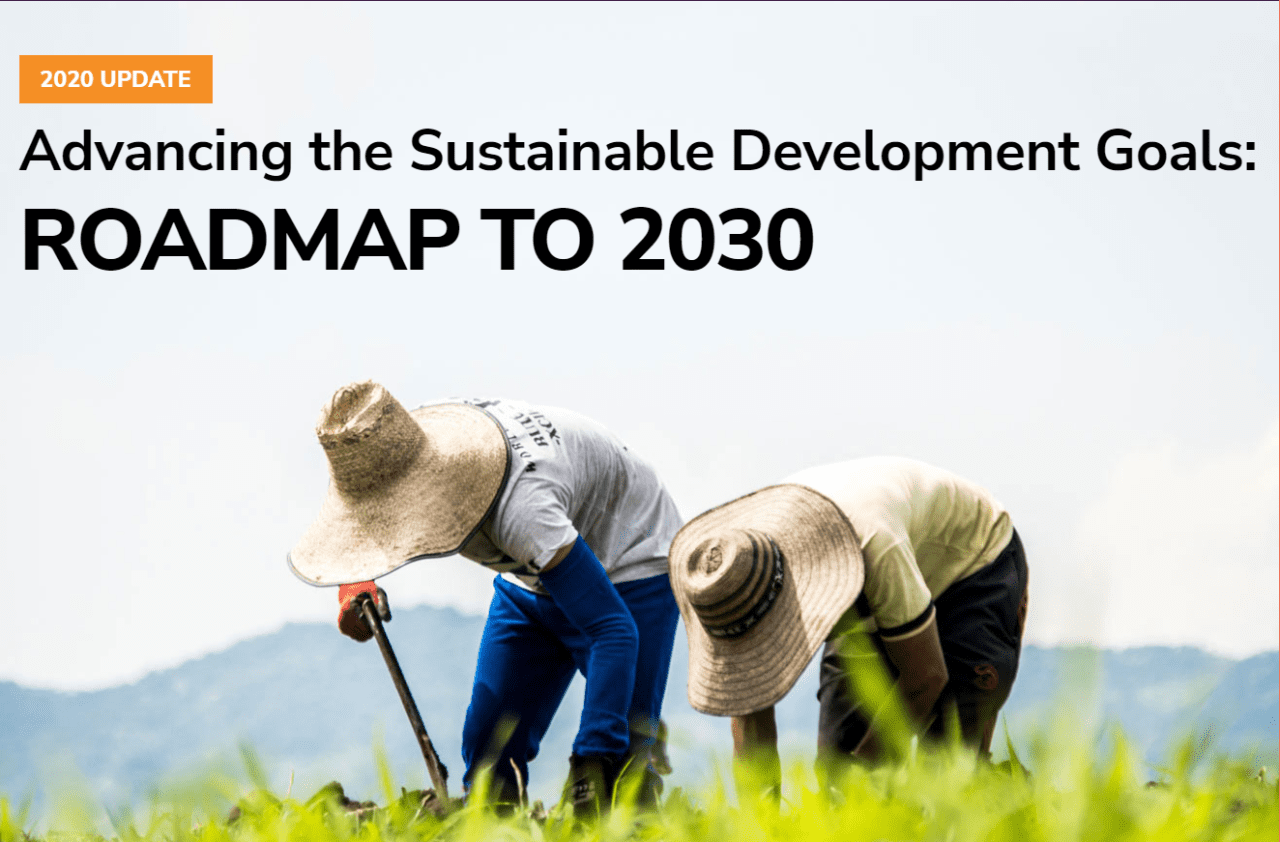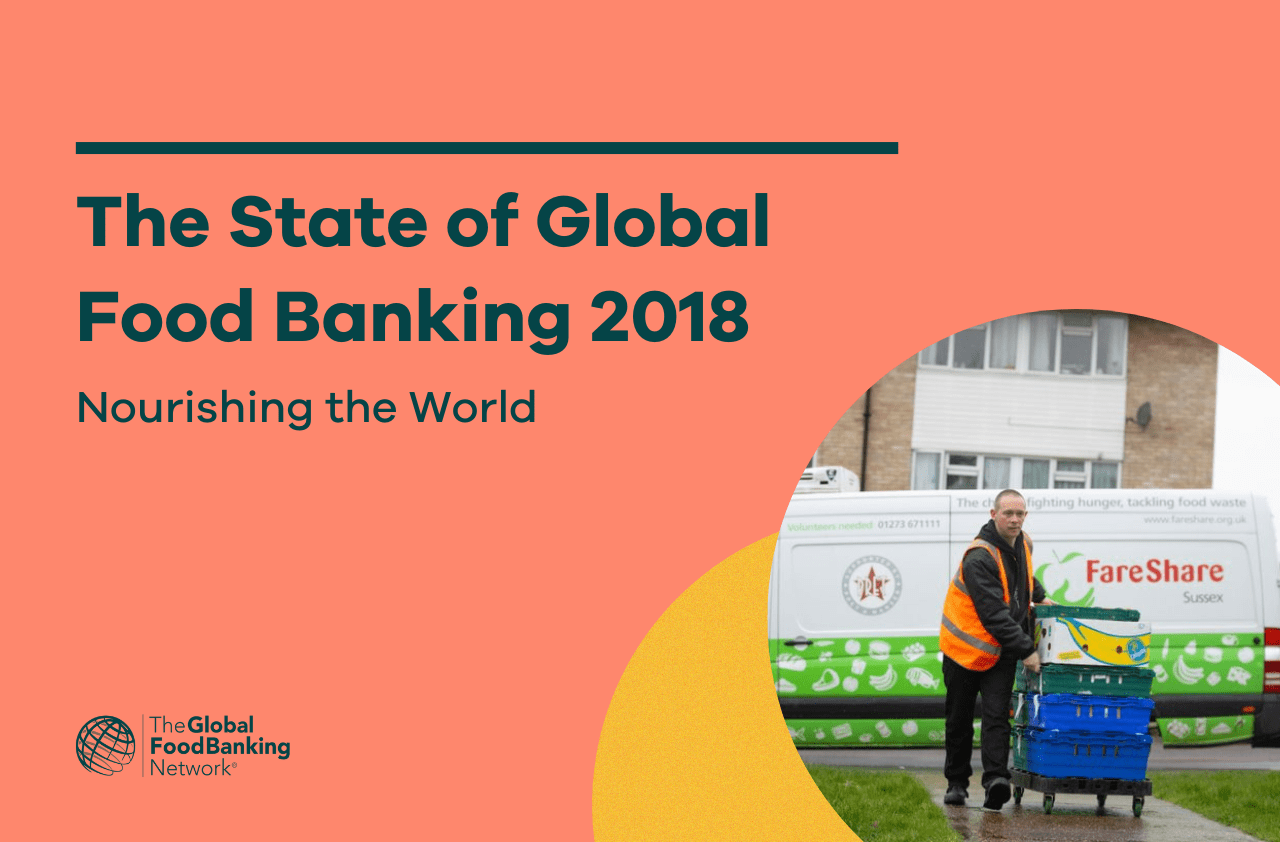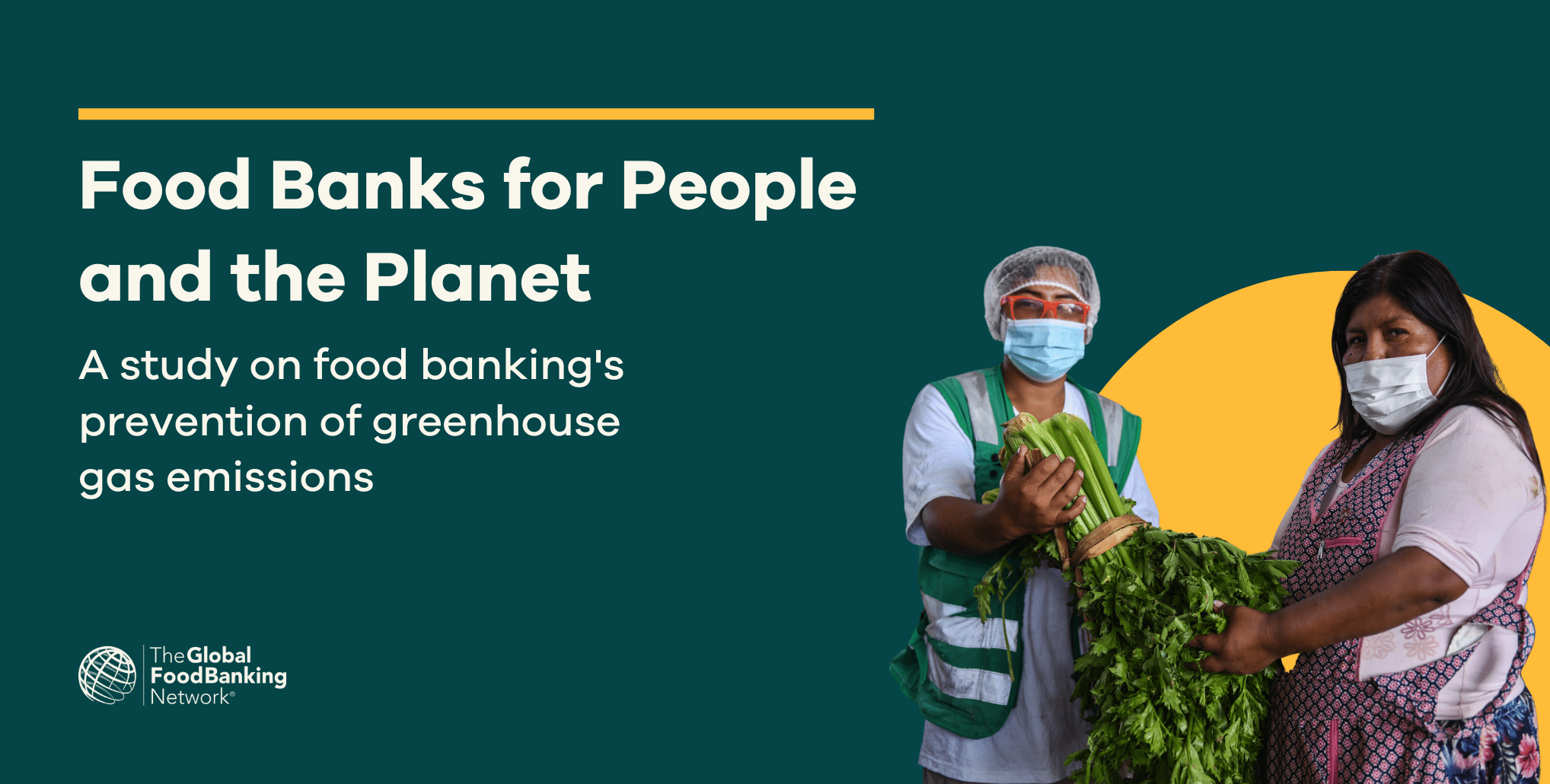The State of Global Food Banking 2020 is the third annual edition of this groundbreaking study on the vital role of food banks in addressing hunger and food insecurity in communities around the world. This year’s study documents dramatic growth in the global reach of food banking amidst exponentially growing need. It presents food banking data for calendar year 2019 as a precursor to the extraordinary response of food banks to the COVID-19 crisis in their communities through October 2020. It draws on 2019 data and initial assessments of the COVID-19 emergency from GFN and our partner networks—European Food Banks Federation (FEBA) and Feeding America.
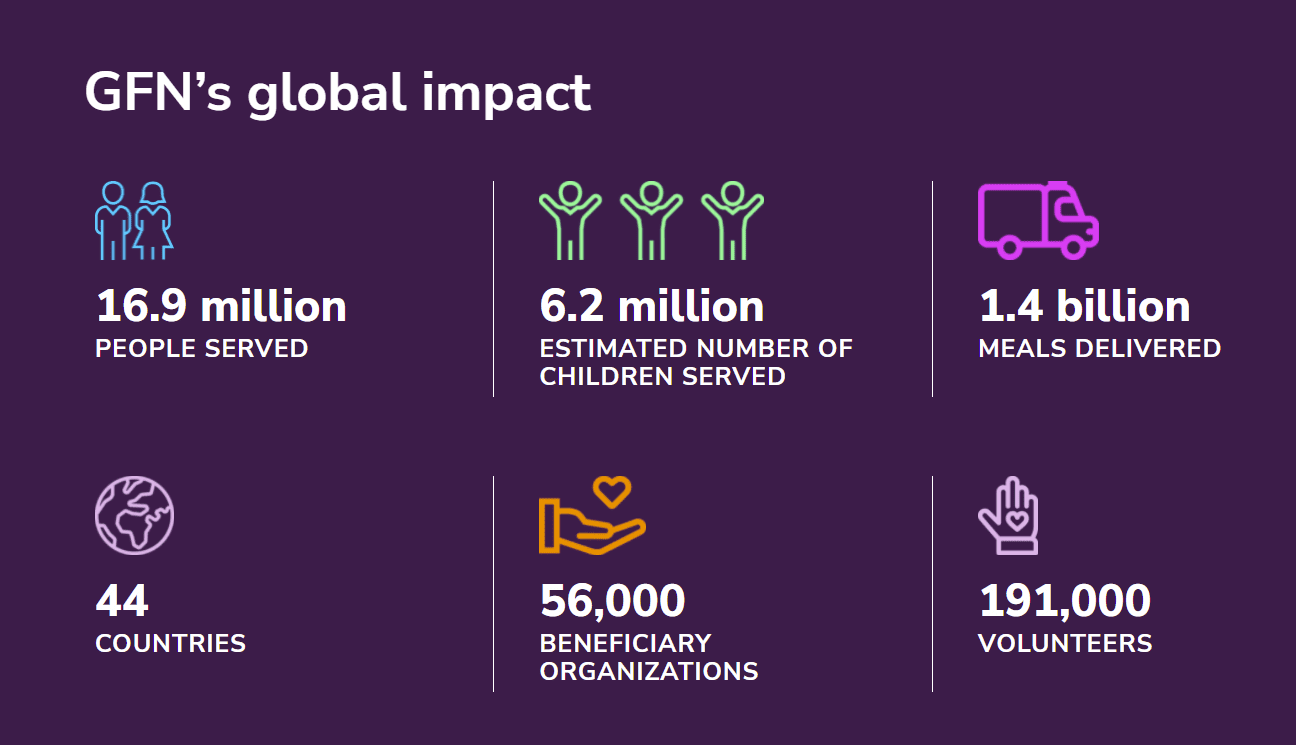
Even before the COVID-19 pandemic, high rates of food insecurity persisted around the world, affecting an estimated 2 billion people overall. The number of people with hunger was up by 10 million in one year and by nearly 60 million in five years.1 In 2019 food banks aided millions of people at risk worldwide. GFN member food banks in 44 countries provided food assistance to 16.9 million people, a 76 percent increase in people reached over 2018. This included an estimated 6.2 million children and 8.9 million women and girls. Food and grocery product distributed by food banks in the GFN system increased 82 percent over the previous year to more than 919.75 million kilograms (54 kilograms per person on average). Food banks also reported offering a greater variety of food choices and higher nutritional quality in the food recovered.
GFN, FEBA, and Feeding America food banks together redirected 3.75 million metric tons of nutritious, surplus food from landfills to more than 66.5 million people worldwide in 2019 while preventing an estimated 12.39 billion kilograms of greenhouse gases from food wastage (see Advancing the SDGs).
In 2019 food banks were already responding to numerous disasters, including the bushfires in Australia. The fires burned over 6 million hectares, destroyed thousands of homes, and closed businesses, forcing hundreds of thousands of people to evacuate and find themselves in need of emergency food assistance. Foodbank Australia, the country’s principal food relief organization in times of disaster, was serving more than 800,000 people per month just as the COVID-19 crisis spread to the country.
The increased impact of food banks in 2019 is due both to the greater scale and effectiveness of existing food banks in the GFN system—through improved agricultural recovery and operational advances—and to the expansion of the food bank model to new countries where large proportions of the world’s undernourished live. GFN member food banks operate primarily in emerging market and developing economy countries where social protections for economically disadvantaged people are often limited and where vulnerable people often struggle with sufficient food access. Food banks offer a crucial lifeline of support in these countries.
In 2019 GFN added food bank members in Africa (Ethiopia, Ghana, Kenya, Madagascar, and Nigeria), in Asia (India, Indonesia, Malaysia, New Zealand, Philippines, Thailand, and Vietnam), and Latin America (Bolivia, Nicaragua, and Uruguay). The addition of 16 new food banks to the GFN system in 2019 allowed an additional 4.5 million vulnerable and food-insecure people to have access to the food they needed to lead healthy, active lives and provided a basis of support in the current crisis.
The pandemic has been a health, economic, and humanitarian crisis unlike any other and has strained all degrees of social protection, food security, and development. As the pandemic destabilized economies and food systems with devastating effects on lives and livelihoods worldwide, food banks have been a first line of defense, responding rapidly to prevent the public health crisis from becoming a hunger crisis.
Across the globe, all GFN food banks reported significant and rapid increases in demand for emergency food assistance due to COVID-19 and its economic impacts. In a matter of weeks after the pandemic spread, food banks saw long lines of the newly poor and unemployed added to those already in need of food assistance.
Government-mandated measures needed to slow the spread of the virus also made food bank operations more difficult amid the economic fallout. Food banks were dealt a double blow: (1) rapidly increased need for services—the need doubled for 37 percent of food banks—and (2) the disruption to food supply chains and food systems, making access to surplus food more difficult at a time of rising demand. In many countries, primarily those where food banks have long operated and are part of official disaster response, governments implemented policies to help address rising demand and help food banks respond to emergency needs in their communities.
Despite the challenges, food banks sprang into action, finding new and innovative ways to address the crisis. Between March and June 2020, GFN-supported food banks provided critical relief in 51 countries on six continents in response to the pandemic. Food and grocery products were distributed to an estimated 22 million people facing hunger through May 2020, an increase of 5 million people pre-COVID-19 in just five months. As emergency food requests have risen from communities of cutoff, disadvantaged, or quarantined people, local food banks have deployed their pre-existing transport, inventory, and logistics infrastructure to rapidly and effectively assist those isolated and hungry due to closed schools, shuttered public support agencies, or overwhelmed health systems.
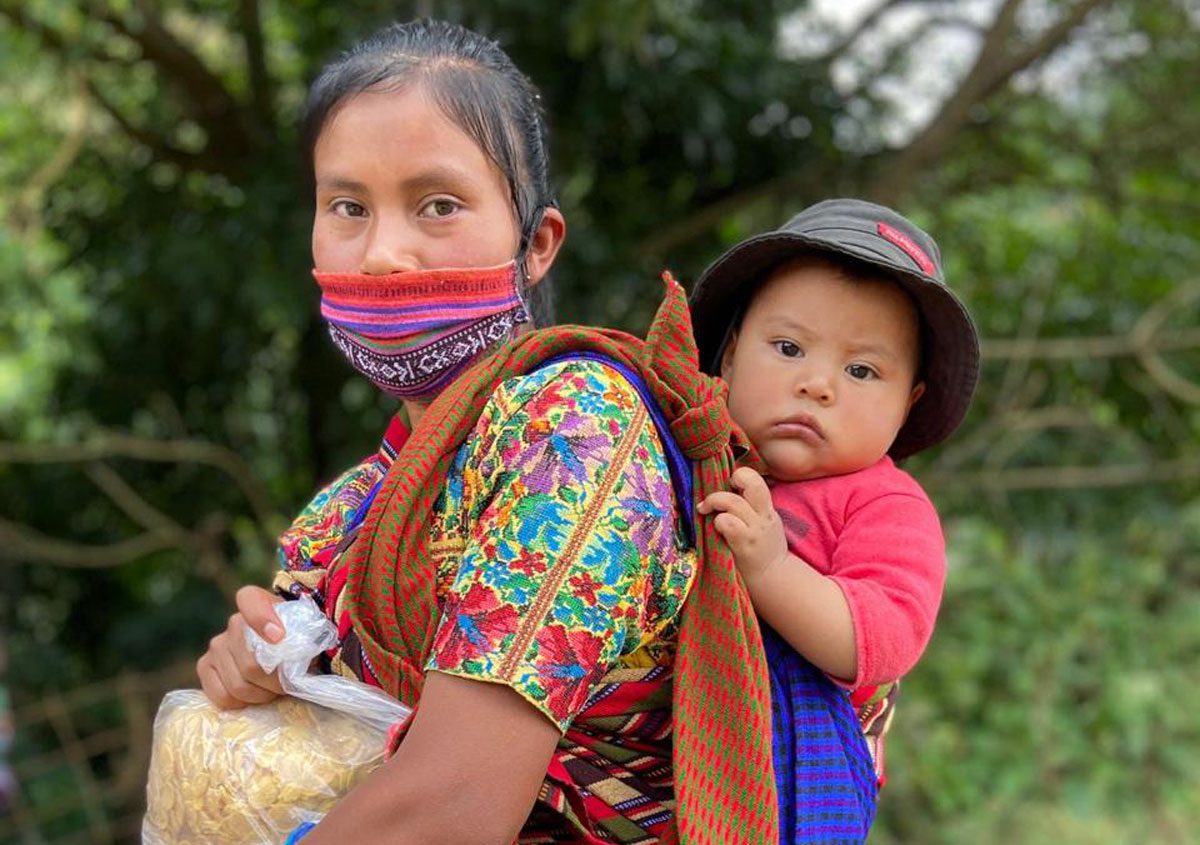
As witnessed in the initial pandemic response, the ability of food banks to rapidly respond to emergency food needs was crucial. The broad geographic scope, community emplacement, and demonstrable effectiveness of the food bank movement was pivotal in the first six months of 2020 as the COVID-19 pandemic swept the globe. An estimated 75 million or more people relied on food banks to address emergency food needs.
Food banks play an important role in ensuring food security in all countries. In nations with limited or inadequate social safety nets and fragile food systems, food banks contribute to the development of civil society institutions, filling gaps in social service and improving food access for the poor. The essential role of food banks has been even more important to the pandemic response.
Estimates suggest that COVID-19 could drive an additional 83 to 132 million people into hunger.2 As governments and societies respond to the ongoing COVID-19 emergency, the importance of expanding social protection for vulnerable people who can’t afford basic nutrition and the mobilization of food banks to meet urgent community needs is essential.3 Food banks are uniquely positioned to do the relief and recovery work because of their rooted community ties, strong partnerships, agility, and flexibility.

